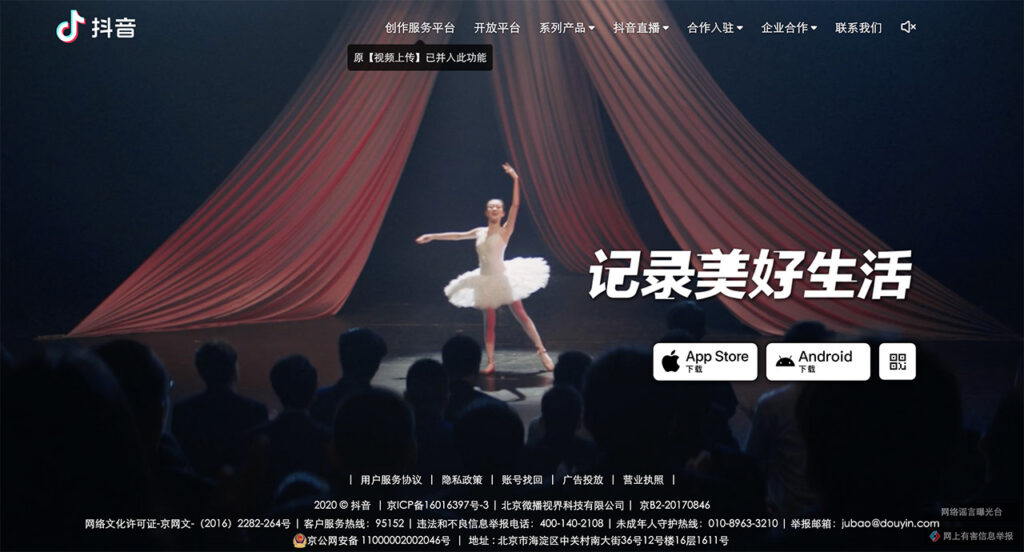The typical Silicon Valley success story involves a visionary entrepreneur with an innovative product laser-focused on capturing its target audience. By contrast, ByteDance, China’s newest technology giant responsible for short-video sensation Douyin and its international version TikTok, has taken the inverse approach.
Referred to in China as an app factory, ByteDance simultaneously operates more than a dozen applications, which share recommendation engines and user data information, launching them into China’s dynamic mobile market to see which ones gain traction. If you will, a many eggs in many baskets strategy for rapidly mainstreaming applications.
Even still, with more than 600 million daily active users, Douyin’s rise to becoming China’s ubiquitous short-video platform can seem retrospectively inevitable. Not so. In early 2017, following six months of lukewarm performance, ByteDance’s founder Zhang Yiming stopped attending weekly Douyin meetings, focusing attention instead on sister video apps Xigua and Huoshan. ByteDance put its top engineers on the case and following an intensive targeting of Millennial and Gen Z urbanites, best evidenced by sponsoring the breakout television show Rap of China, Douyin began to gain steam.
The speed and scope of growth was unprecedented; users doubled from seven to 14 million in October 2017 and reached 200 million by the end of the following year. A rebranding under the slogan “Record Beautiful Life” in 2018 acknowledged the platform’s broad appeal and desire to dominate the mainstream.
ByteDance’s explosive emergence has shaken China’s tech duopoly, Tencent and Alibaba, dispelling conventional ideas surrounding tech entrepreneurship in the process. The company’s innovative approach is the subject of Attention Factory, a book by long-time China tech-watcher Matthew Brennan. Jing Culture & Commerce spoke to Brennan to discuss the factors behind Douyin’s rise, the challenges of staying mainstream, and what it all means for the future of TikTok.
What prompted you to devote a book to ByteDance?
I’ve been a heavy user of Douyin for many years, and of the Chinese tech companies, ByteDance is the youngest and perhaps the one I’ve been most interested in. They’ve become a very serious competitor to Tencent and I wanted to understand them better. The original project was to do a mini-book, but I just kept going. It’s quite amazing how the profile has completely transformed this year. Everyone started using TikTok during COVID.
Could you discuss the transformation of Douyin’s user base?
In 2016, it was a clone of music.ly targeting preteens and teenagers, which wasn’t working. Then it was an app for trendy urbanites in their early twenties. Then in 2018, it changed its slogan to “Record Beautiful Life” and it goes mainstream. Three positions in three years. Today, it’s an app for everybody and TikTok will go through the exact same stages.

Launched in 2018, Douyin’s “Record Beautiful Life” rebranding campaign helped drive the mainstreaming of the platform. Image: Douyin
How have you seen content change on Douyin?
It was first embraced by young people making creative content — mostly dance, lip-sync, and comedy-centric — but soon digital marketers, content creators, and multi-channel networks flooded in and it became more business-focused. Once it became hot, everyone focused on how to make money from it, how to do e-commerce on it, how to livestream on it.
Douyin now boasts 600 million users — has it peaked? Where does ByteDance go next?
For years, people have been proclaiming it has reached a ceiling and it just keeps going. But when the app is being opened by over half of all mobile users on a daily basis, you are running out of people, though you can increase user time. If we can use China as a window into the future, the implications for TikTok are strong. Usage is already pretty good, but it has some way to go. A legitimate question is whether it goes out of fashion, but if you look at it as a mobile-centric version of YouTube, people aren’t leaving to go elsewhere. You have people who delete the app because they feel it’s too addictive and a waste of time, but that only speaks to the quality of the experience and the strength of Douyin’s position.
If increasing user time is a goal, will we see Douyin become more social?
There is no social network to drive stickiness and keep people locked in, but they are finding ways to make it more social. The second tab on Douyin is now “friends,” and they have pushed for people to add their contact list and integrate social aspects. But it’s not inherently a social app and if you do make it social, it might inhibit people. But ByteDance is committed to continually experiment.
TikTok’s success has exceeded even ByteDance’s expectations. How do you understand it?
A Chinese internet company has never had success both domestically and internationally. I fully expected Facebook to take countermeasures in 2019, but they dropped the ball. ByteDance flooded the world with advertisements in 2018, expecting a response from Google and Facebook that never really came.
What’s next for ByteDance?
Being in the content space, Bytedance recognizes the need to continually innovate and bring out new products. There is no founder of TikTok, no founder of Douyin; it wasn’t a vision of some of the famous apps like from Silicon Valley. They are a company that experiments a lot and when they find something that works, they run with it and put money behind it. Longer term, they could do this again at some point. They have systems in place to rapidly prototype and experiment and iterate on different forms of content apps. It’s a good way to keep the company fresh and young, and it’s no coincidence that they have broken out.



